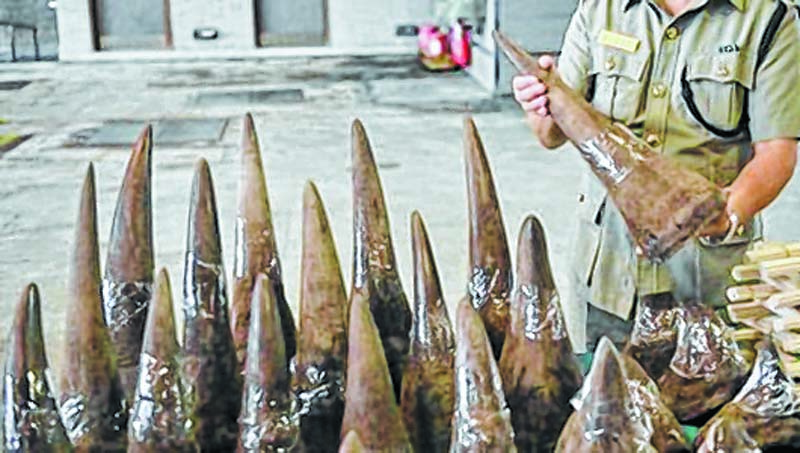 GUWAHATI, Apr 27:Churachandpur district in Manipur has emerged as the new hub for illegal trade in rhino horns and body parts of other animals. Experts dealing in wildlife crime said Churachandpur has beaten Nagaland’s commercial centre Dimapur, which used to be the centre of rhino horn smuggling.
GUWAHATI, Apr 27:Churachandpur district in Manipur has emerged as the new hub for illegal trade in rhino horns and body parts of other animals. Experts dealing in wildlife crime said Churachandpur has beaten Nagaland’s commercial centre Dimapur, which used to be the centre of rhino horn smuggling.
“Now, the bulk of the illegal trade in rhino horn is controlled from Churachandpur because of its proximity to Myanmar. Dimapur used to be the hub of rhino horn trade but not any more,” said Bibhab Kumar Talukdar, a member of an Asian rhino specialist group of the International Union for Conservation of Nature’s Species Survival Commission.
Manipur’s border town Moreh is about 270 km from Churachandpur and provides an easy escape route for the traders. Wildlife crime experts said Churachandpur is a relatively safer location in comparison to Dimapur, which had attracted a lot of attention of the enforcement agencies as well various national and international conservation forums because of its flourishing illegal trade in rhino horns.
An expert said on condition of anonymity that there are a couple of reasons for the shift in the illegal trade to Churachandpur. “Apart from proximity to the smuggling zone in Myanmar, the place is also relatively unknown,” said the expert.
He added that old age and the death of some members of the gang who used to control the smuggling racket from Dimapur, is also believed to have contributed to the shift.
A new generation of smugglers has taken over the trade in Churachandpur, drying up Dimapur’s illegal trade.
This is obvious from the fact that sharpshooters and poachers involved in
many of the poaching incidents in Assam in recent times were all from Churachandpur.
The growing demand for body parts of animals for medicinal purposes in China and Vietnam has been feeding this smuggling network.
In fact, a report by IUCN-Species Survival Commission and TRAFFIC (a wildlife trade monitoring network) last year pointed out that Myanmar has now become the primary route for smuggling rhino horns from Assam.
The earlier Nepal-China route hit a roadblock in 2013 after a crackdown on rhino poaching in the Himalayan region.
The recovery of a rhino horn from an accident site at Baihata Chariali in Kamrup district last
month, suspected to have been sourced from the Gorumara National Park in West Bengal, corroborated that the northeast is now increasingly being used as a conduit for smuggling wildlife body parts to Myanmar bypassing the Nepal-China route.
While the bulk of the rhino horns sourced from Assam take the Myanmar route, last month’s accident revealed that body parts from other states are also being transported through this route.
Assam has about 2, 626 rhinos, which is two-thirds of the world’s greater one-horned rhino population.
Source: The Sangai Express



